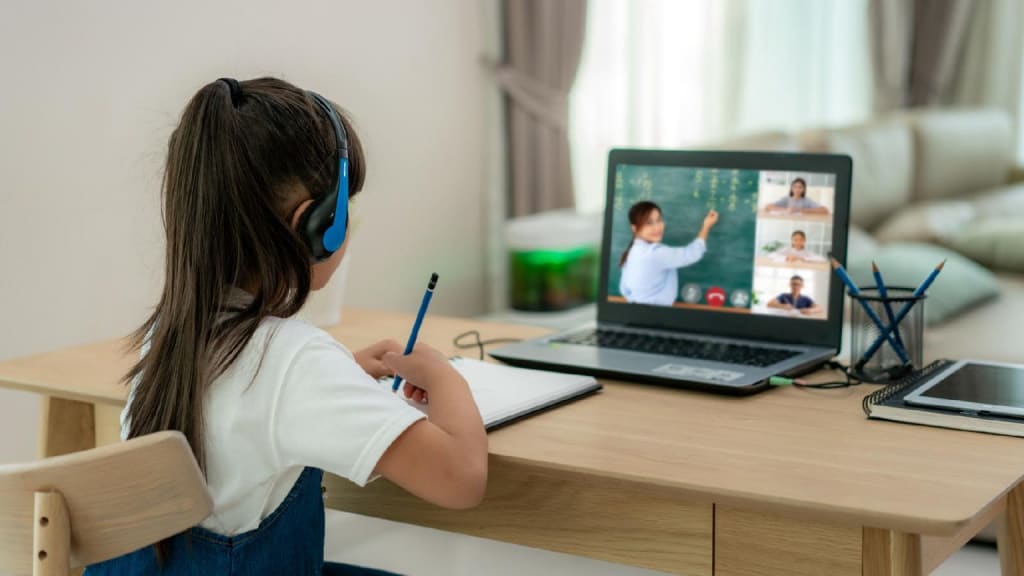The Impact of Technology on Education: How It's Changing the Classroom
Technology in depth

Technology has revolutionized the way we live, work, and learn. In the field of education, technology has transformed the traditional classroom into a dynamic and interactive learning environment. From online courses to virtual reality simulations, technology has opened up new avenues for students to explore and learn.
One of the most significant impacts of technology on education is the accessibility of information. With the internet, students can access a vast amount of information on any subject at any time. This has made learning more flexible and personalized, allowing students to learn at their own pace and on their own schedule. For example, online courses and tutorials have made it possible for students to learn new skills and subjects from the comfort of their own homes.
Another way technology is changing the classroom is through the use of interactive tools and software. Smartboards, tablets, and other digital devices have replaced traditional chalkboards and textbooks, making learning more engaging and interactive. For example, students can use interactive software to explore complex concepts in science and math, or use virtual reality simulations to experience historical events or scientific phenomena.
Technology has also made it easier for teachers to track student progress and provide personalized feedback. Learning management systems and other software tools allow teachers to monitor student performance, identify areas where students are struggling, and provide targeted feedback and support. This has made it easier for teachers to tailor their instruction to meet the needs of individual students, improving learning outcomes and student engagement.
However, technology is not without its challenges. One of the biggest concerns is the potential for technology to distract students and detract from their learning. With the constant barrage of notifications and distractions from social media and other digital devices, students may find it difficult to stay focused on their studies. Additionally, there is a concern that technology may replace human interaction and personal connection in the classroom, leading to a loss of social skills and emotional intelligence.
Despite these challenges, the benefits of technology in education far outweigh the drawbacks. Technology has opened up new opportunities for learning and has made education more accessible, engaging, and personalized. As technology continues to evolve, it will be exciting to see how it will continue to transform the classroom and the way we learn.
In conclusion, technology has had a profound impact on education, transforming the traditional classroom into a dynamic and interactive learning environment. From online courses to virtual reality simulations, technology has opened up new avenues for students to explore and learn. While there are challenges to overcome, the benefits of technology in education far outweigh the drawbacks. As we continue to embrace technology in education, we can look forward to a future of endless possibilities and opportunities for learning.
Now, let's take a closer look at some of the ways technology is changing the classroom and the impact it's having on students and teachers.
1. Personalized Learning
One of the most significant benefits of technology in education is the ability to personalize learning. With online courses and tutorials, students can learn at their own pace and on their own schedule. This is particularly beneficial for students who may struggle with traditional classroom instruction or who have other commitments that make it difficult to attend classes in person.
Additionally, technology allows teachers to track student progress and provide targeted feedback and support. Learning management systems and other software tools make it easy for teachers to identify areas where students are struggling and provide additional resources and support to help them succeed.
2. Interactive Learning
Another way technology is changing the classroom is through the use of interactive tools and software. Smartboards, tablets, and other digital devices have replaced traditional chalkboards and textbooks, making learning more engaging and interactive.
For example, students can use interactive software to explore complex concepts in science and math, or use virtual reality simulations to experience historical events or scientific phenomena. This type of interactive learning can help students better understand and retain information, making it more likely that they will succeed in their studies.
3. Access to Information
With the internet, students can access a vast amount of information on any subject at any time. This has made learning more flexible and personalized, allowing students to learn at their own pace and on their own schedule.
For example, online courses and tutorials have made it possible for students to learn new skills and subjects from the comfort of their own homes. This type of access to information has also made it easier for students to conduct research and complete assignments, as they can easily find and access the information they need.
4. Collaboration and Communication
Technology has also made it easier for students to collaborate and communicate with each other and with their teachers. Online discussion forums, video conferencing, and other digital tools make it easy for students to work together on group projects and assignments, even if they are not in the same physical location.
Additionally, technology has made it easier for teachers to communicate with students and provide feedback and support. Email, instant messaging, and other digital tools make it easy for teachers to stay in touch with students and provide timely feedback on assignments and projects.
5. Challenges and Concerns
While technology has many benefits in education, it is not without its challenges and concerns. One of the biggest concerns is the potential for technology to distract students and detract from their learning.
With the constant barrage of notifications and distractions from social media and other digital devices, students may find it difficult to stay focused on their studies. Additionally, there is a concern that technology may replace human interaction and personal connection in the classroom, leading to a loss of social skills and emotional intelligence.
6. The Future of Technology in Education
As technology continues to evolve, it will be exciting to see how it will continue to transform the classroom and the way we learn. From artificial intelligence to virtual reality, there are many new technologies on the horizon that have the potential to revolutionize education.
However, it's important to remember that technology is not a panacea for all of the challenges facing education. While technology can certainly enhance learning and improve outcomes, it is not a substitute for good teaching and personal interaction between students and teachers.
In conclusion, technology has had a profound impact on education, transforming the traditional classroom into a dynamic and interactive learning environment. While there are challenges to overcome, the benefits of technology in education far outweigh the drawbacks. As we continue to embrace technology in education, we can look forward to a future of endless possibilities and opportunities for learning.





Comments
There are no comments for this story
Be the first to respond and start the conversation.